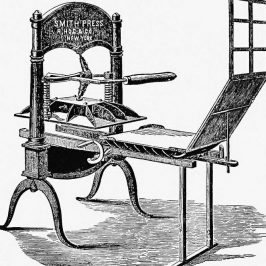
Let me be frank, I’ve never watched Maria Kondo’s programme, but I have caught the odd snippet and various comments on social media.
She launched into my personal orbit when she stated that one should only own 30 books. The echo-chamber that is Facebook was up in arms – what a terrible thing to suggest. My husband’s response was, ‘She means, in the loo, right? Only 30 books in the loo…’ (we have 3 loos in our house, so that’s 90 books right there 🙂 )
We are a bookish household. We have the occasional cull, when it seems to be getting out of hand, but it makes very little difference and we continue to be up to our ears – the trouble is, you see, having culled there’s room for more, isn’t there? So let’s hit Waterstones, local indie book shops, charity shops…
It’s not just books. Ms. Kondo also advises that one should only keep items which ‘spark joy’. Well I don’t know about you, but pretty much everything in our house does that,I am surrounded by an entire galaxy of objects sparking away to their hearts’ delight, a positive conflagration.
Don’t get me wrong. We are not well-organised people and we do not live in an antiseptic organised home with well-placed objects – far from it. I admit, we live in a muddle, life is too short for housework and four cats wreak havoc. BUT and it is a massive ‘but’, the items we have around us, matter.
I say ‘we’, but really it’s me, my husband is a bit more shoulder-shrugging on the subject but I can stand in a room, just looking at something that gives me pleasure, and entirely lose track of time…
The objects that surround me all have a history, and a story. That history, those stories, should be valued.
This is why I’ve decided to write this series of articles – inspired in an odd, slightly negative way by Ms. Kondo, and in a different, more positive way by Neil MacGregor’s History of the World in 100 Objects
So welcome, come on in and sit down, let me introduce you to my Cabinet of Personal Curiosities…
THE GRYPHON

Look at him, isn’t he magnificent? He currently lives on the sill of the tiny shuttered window in our bedroom. He is made of oak and is, I would estimate, late 19th century. There is an air of Victorian Gothic revival about him that I absolutely love.
Where did he come from?
Being literal for a moment, I suspect he originally topped a newel post at the bottom of some grand staircase.
For my part, I’ve had him a long time and in common with many of the objects I’ll be sharing, he is a product of my antiques dealing days.
I’ve reinvented myself many times in my life. I’ve worked for auction rooms, been an auctioneer then moved on to being a dealer in my own right, working antiques fairs and the London trade markets, particularly Bermondsey which I’m delighted to see is still running.
My stall would be stocked mainly with items bought at auction. My gryphon, if memory serves, came from one such sale in Suffolk. I bought a job lot containing the gryphon, a carved wooden eagle and a whole variety of other bits and bobs. I sold all the bits and bobs, and kept the items I loved best – the gryphon and the eagle.
A Little Bit About Gryphons
The gryphon is a mythological creature, part eagle, part lion. They are known for guarding treasures and sacred sites.
It is only as I write this that I understand the gryphon’s specific personal appeal. It is part lion (a pussy cat, and anyone who knows me, knows how besotted I am with our cats). It is also part eagle i.e. a bird of prey and I love birds of prey…
Oh and he guards treasure…well my treasures aren’t worth a lot of money, but they are emotional treasures, story-troves.
‘Tis a win-win, clearly.
Gryphons aside, I do generally have a fondness for heraldic beasts, you need only look at the art nouveau firescreen featured in my blog Looking for a Literary Agent. True the creature on the firescreen is a dragon not a gryphon, but the two are similar in many respects and often confused. A later post in this series will look at a magnificent studio pottery vase given to me by a good friend many years ago. Gryphons a-plenty on that one

If you would like to read more about gryphons (or griffins, although that seems a very pedestrian spelling to me 🙂 ) there are many sites but this quote made me smile and is the thought I would like to leave you with “The egg-laying habits of the female were first clearly described by St. Hildegard of Bingen .. “






3collation
1exalting
dissertation writers
dissertation writing service https://professionaldissertationwriting.org/
books thesis dissertation help
language editing phd thesis https://professionaldissertationwriting.com/
proposal and dissertation help 2000 words
marketing acknowledgement https://helpwithdissertationwritinglondon.com/
mathematics dissertation help
dissertation title examples https://dissertationwritingcenter.com/
write my dissertation for me
write my dissertation https://dissertationhelpexpert.com/
doctoral dissertation help thesis
dissertation proposal sample https://accountingdissertationhelp.com/
writing dissertations
writing your doctoral dissertation https://examplesofdissertation.com/
best dissertation writing service review
dissertation statistics help https://writing-a-dissertation.net/
writing help
how do i write a dissertation https://bestdissertationwritingservice.net/
writing your dissertation
how to write a dissertation proposal https://businessdissertationhelp.com/
proposal and dissertation help plan
how do i write a dissertation https://customdissertationwritinghelp.com/
dissertation introduction
cheap dissertation writing services https://writingadissertationproposal.com/
write my dissertation for me
dissertation methodology https://dissertationhelpspecialist.com/
writing dissertations
dissertation proposal writing services https://dissertationhelperhub.com/
dissertation structure
writing acknowledgement dissertation https://customthesiswritingservices.com/
riversweeps 777 online casino app
online casino free bet https://download-casino-slots.com/
online casino betting
online casino for real money usa https://firstonlinecasino.org/
online casino no deposit sign up bonus
nj casino online https://onlinecasinofortunes.com/
instant withdrawal online casino usa 2020
free online casino no deposit https://newlasvegascasinos.com/
resorts online casino bonus codes
pa online casino apps https://trust-online-casino.com/
golden dragon online casino
mgm casino online pa https://onlinecasinosdirectory.org/
usa online casino no deposit bonus codes
online casino https://9lineslotscasino.com/
online casino deposit bonuses
jacks casino online https://internet-casinos-online.net/
big dollar online casino
live casino online real money https://cybertimeonlinecasino.com/
msn zone online casino
online casino app https://1freeslotscasino.com/
casino online streaming
borgata casino online https://vrgamescasino.com/
online casino bonus
online casino promo codes https://casino-online-roulette.com/
new york online casino
casino gambling online https://casino-online-jackpot.com/
online casino real money free bonus
four winds online casino app https://onlineplayerscasino.com/
riversweeps online casino
ti casino online https://ownonlinecasino.com/
golden eagle casino online
empire city casino online https://all-online-casino-games.com/
online casino free play
online casino deposit bonus https://casino8online.com/
business vpn router
free vpn ios https://freevpnconnection.com/
free p2p vpn
hide my asss vpn https://shiva-vpn.com/
best free vpn to use in china
vpn proxy https://freehostingvpn.com/
best browser vpn
best free vpn for windows 2022 https://ippowervpn.net/
best rated vpn 2018
free unlimited vpn for pc https://imfreevpn.net/
best free pc vpn
turbo vpn for pc https://superfreevpn.net/
cisco vpn client download
best vpn for china https://free-vpn-proxy.com/
best vpn for uk
free unlimited vpn for mac https://rsvpnorthvalley.com/
free dating gay black men
gay right wing dating site https://gay-singles-dating.com/
gay dating dallas texas
dating gay https://gayedating.com/
gay dating red flags
gay chub dating https://datinggayservices.com/
hinge dating
date online https://freephotodating.com/
catholic christian dating website
free dating services https://onlinedatingbabes.com/
adult dating sites
meet women online free https://adult-singles-online-dating.com/
best free online dating
single website https://adult-classifieds-online-dating.com/
dating sites for totally free for usa
dating website free https://speedatingwebsites.com/
meet singles for free
meet people online https://datingpersonalsonline.com/
japanese dating
dating website free https://wowdatingsites.com/
free singles dating
no credit card dating sites https://lavaonlinedating.com/
internet dating site
top single service https://freeadultdatingpasses.com/
christiandatingforfree search
ourtime free trial https://virtual-online-dating-service.com/
dating apps
free for online chatting with singles https://zonlinedating.com/
best sites online dating
free dating sites for men and women https://onlinedatingservicesecrets.com/
zone online casino vegas world
miami online casino https://onlinecasinos4me.com/
empire city casino online
ocean casino online https://online2casino.com/
parx online casino pa
online casino with free signup bonus real money https://casinosonlinex.com/
ring central gay chat rooms
chat random gay chat https://newgaychat.com/
gay teen cam chat
gay webcam chat https://gaychatcams.net/
gay daddy chat
b-gay chat https://gaychatspots.com/
frree gay and bi chat sites in seattle wa
gay live chat https://gay-live-chat.net/
dubuque gay chat
gay chat websites https://chatcongays.com/
gay video chat room
dirty gay video chat free https://gayphillychat.com/
chat en vivo gay
zoom cam rooms gay chat https://gaychatnorules.com/
gay grandpa video chat
gay grandpa video chat https://gaymusclechatrooms.com/
gay danish english chat rooms
gay sex chat roulette https://free-gay-sex-chat.com/
gay video chat surry county nc
naked gay chat rooms https://gayinteracialchat.com/
gay chat room ontario ca
gay mature men chat group https://gaymanchatrooms.com/
write my paper apa format
pay someone to write a paper for me https://term-paper-help.org/
write my sociology paper
write my paper please https://sociologypapershelp.com/
buy school papers online
write my paper for money https://uktermpaperwriters.com/
do my papers
i will pay you to write my paper https://paperwritinghq.com/
best college paper writing service
write my nursing paper https://writepapersformoney.com/
buy custom papers
pay for a paper https://write-my-paper-for-me.org/
where to buy writing paper
college paper ghost writer https://doyourpapersonline.com/
write my paper canada
write my paper online https://top100custompapernapkins.com/
paper writing services online
what is the best paper writing service https://cheapcustompaper.org/
buy writing paper
write my sociology paper https://writingpaperservice.net/
paper writing services
pay someone to write your paper https://buyessaypaperz.com/
pay someone to write paper
paper writing service college https://mypaperwritinghelp.com/
write my paper fast
custom papers review https://writemypaperquick.com/
paper help
college paper writing services https://essaybuypaper.com/
write my paper for me
buy papers online for college https://papercranewritingservices.com/
write my paper apa style
best custom papers https://premiumpapershelp.com/
someone to write my paper
pay to do my paper https://ypaywallpapers.com/
custom paper service
help me write a paper https://studentpaperhelp.com/
2development
2starboard